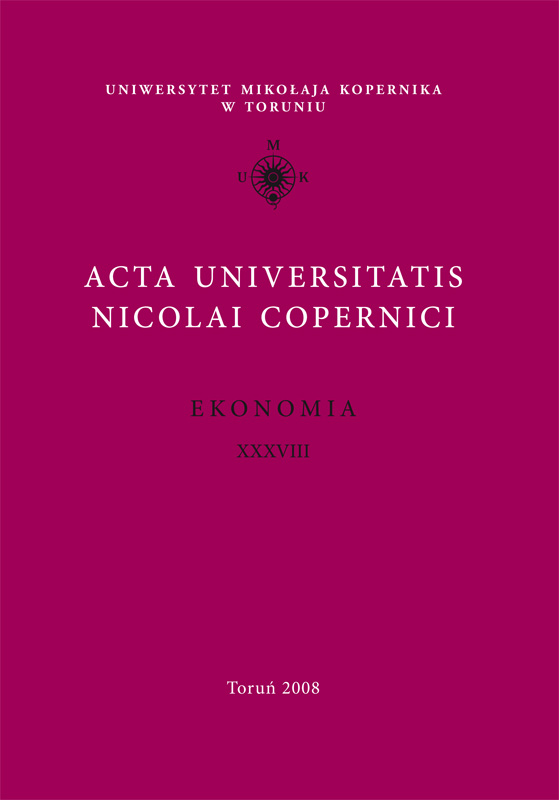Analysis of the structure of economic spatial processes on the example of GDP in chosen european countries
DOI:
https://doi.org/10.12775/AUNC_ECON.2008.001Keywords
spatial trend, spatial autocorrelation, connectivity matrix, correlogramAbstract
The purpose of the paper is to show the procedure of modelling of the spatial processes, which takes into account the deterministic and stochastic structure of these processes. In the introduction a general structure of components of the spatial economic process was presented. The property of homogeneity (stationarity) of the spatial processes was discussed as well. In the section 2 the notion of the spatial trend was formulated and the chosen models of the spatial trends were presented. There was also demonstrated an empirical example of fi tting the adequate model of the spatial trend. In the section 3 the attention was focused on the phenomenon of the spatial autocorrelation. The structures of spatial connections most often used for investigating the autocorrelation were pointed out. The appropriate measure of the spatial autocorrelation was given and an empirical example of investigating the autocorrelation was presented. The analysis of the spatial autocorrelation was realized in particular basing on the readings of the so-called spatial correlogram. In the section 4 the model of the spatial process, which takes into consideration the previous settlements as regards its internal structure, was proposed. The section 5 includes a short recapitulation. The results of the investigation confi rmed the necessity of determining the internal structures while modelling the spatial economic processes.
References
Kopczewska K. (2006), Ekonometria i statystyka przestrzenna z wykorzystaniem programu R CRAN, CeDeWu Sp. Z o. o.
Longley P., Goodchild M., Maguire D., Rhind D. (2001), Geographic Information Systems and Science, John Wiley & Sons, New York.
Schabenberger O., Gotway A. C. (2005), Statistical Methods for Spatial Data Analysis, Champion & Hall/CRC, New York.
Downloads
Published
How to Cite
Issue
Section
License
Autorzy, których teksty zostaną przyjęte do publikacji, po uzyskaniu pozytywnych recenzji wydawniczych oraz zaakceptowaniu do publikacji przez Komitet Redakcyjny, podpisują umowę licencyjną.
Stats
Number of views and downloads: 999
Number of citations: 0



